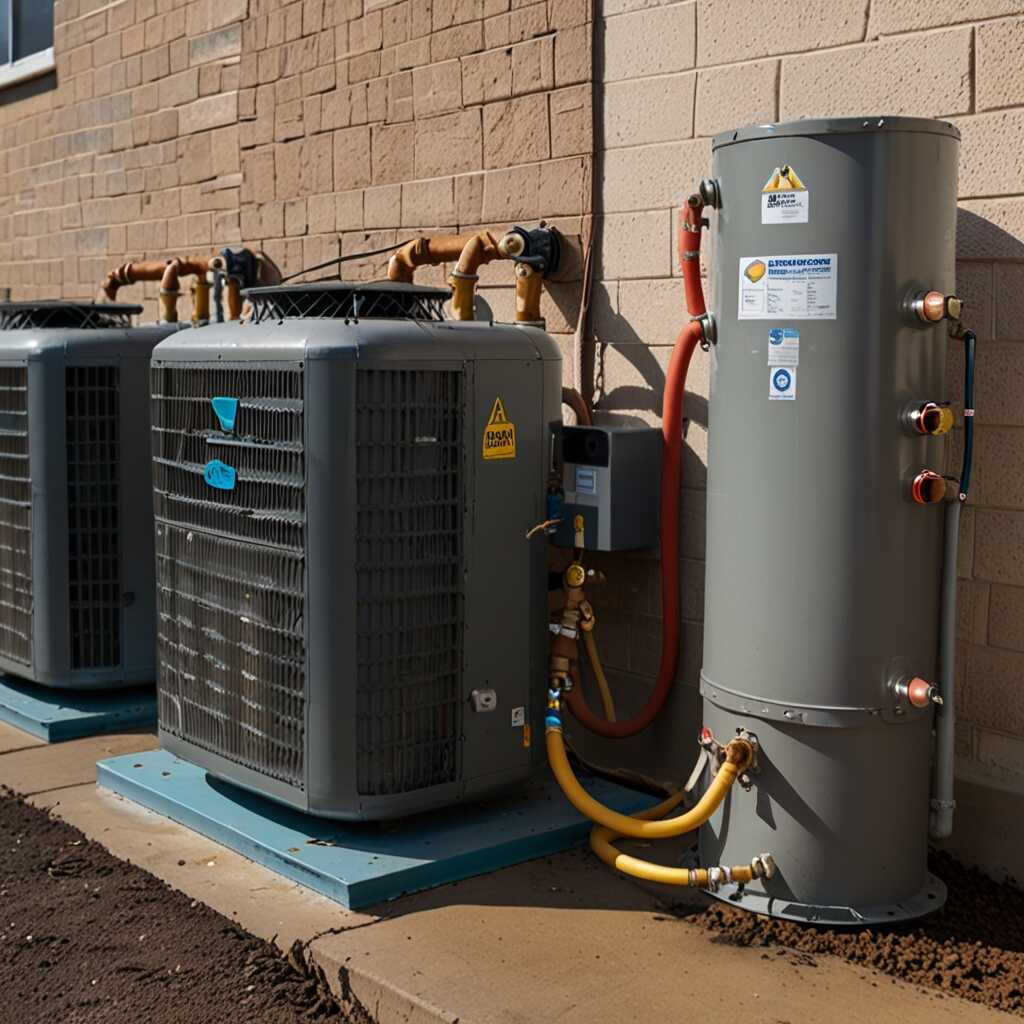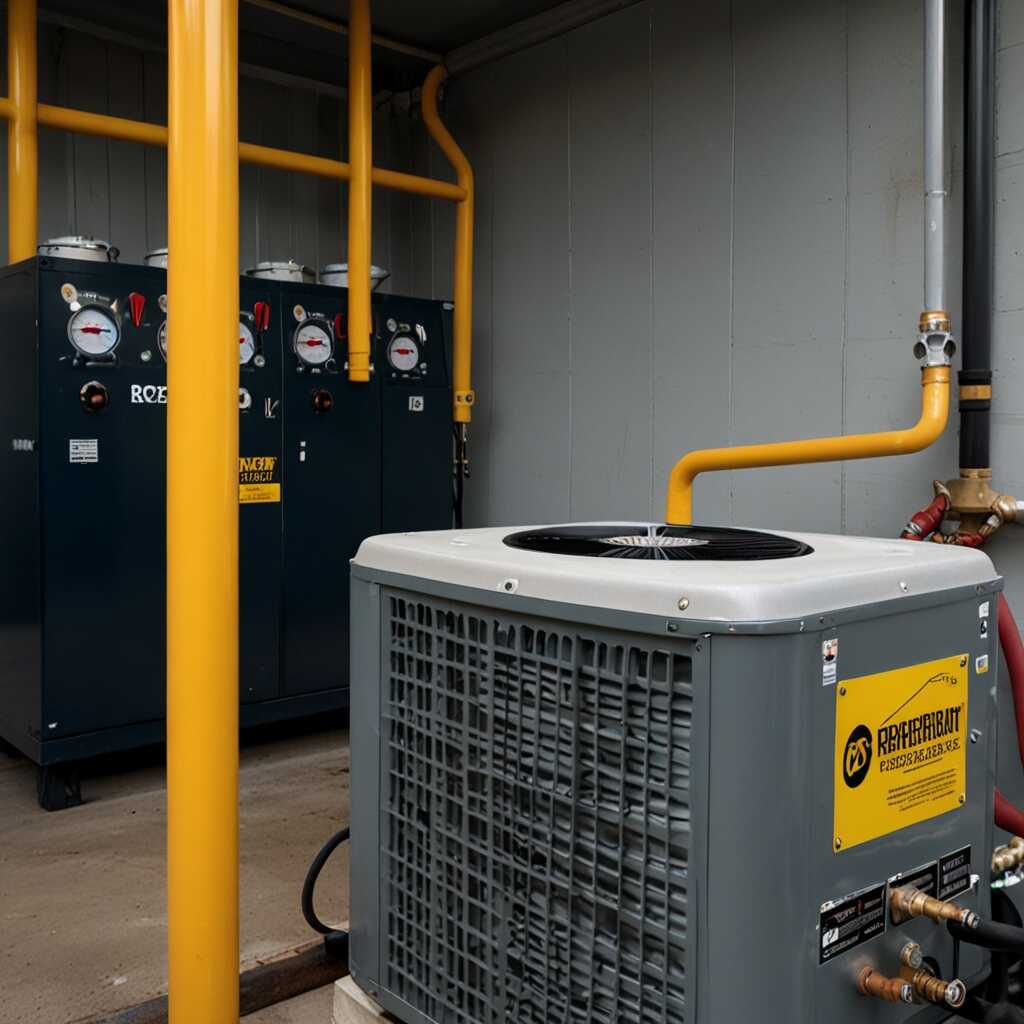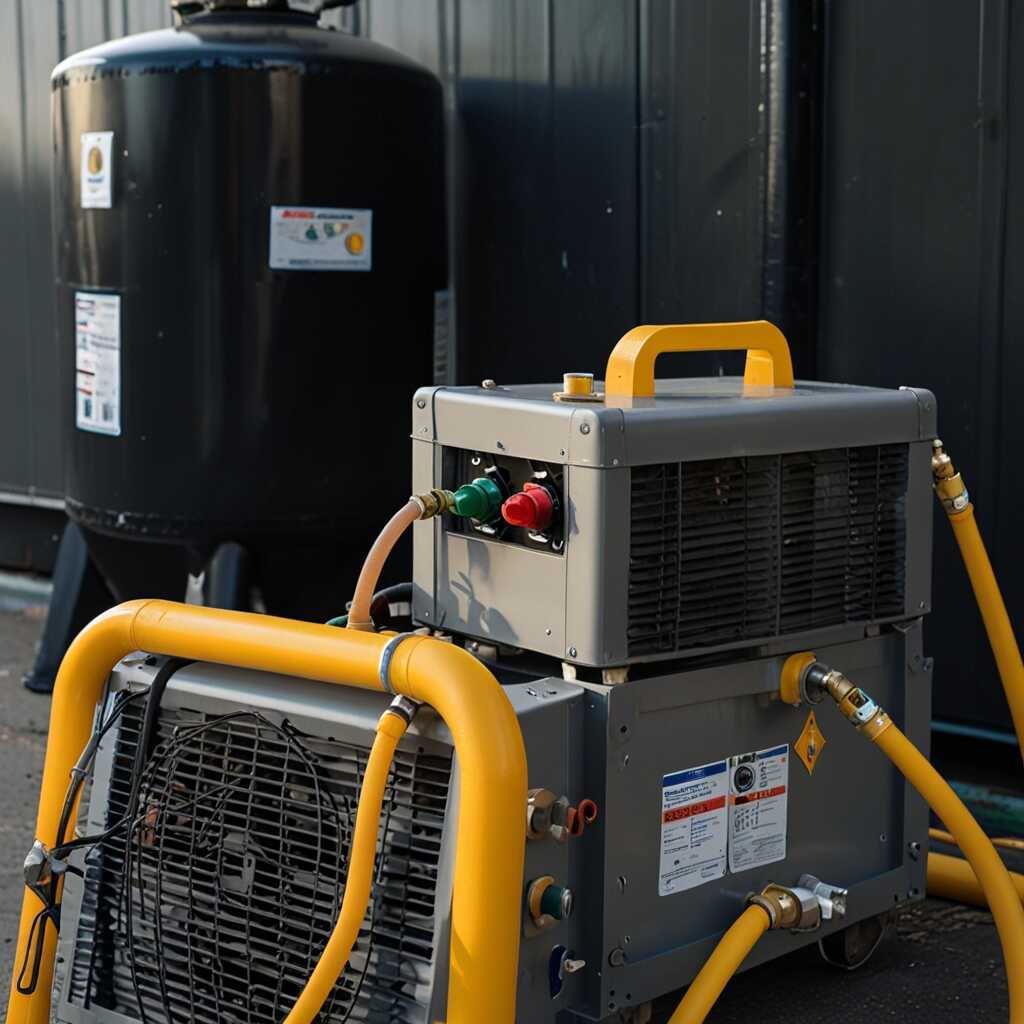Remote operated refrigerant recovery machines significantly enhance technician efficiency in HVAC services. These advanced machines enable technicians to recover refrigerants from systems with minimal physical intervention, streamlining their workflow. At Refrigerant Recovery Pro, we highlight how these innovations reduce labor costs and improve operational productivity in the HVAC sector. Understanding the benefits of this technology can transform your approach to refrigerant recovery and optimize your service offerings.
Overview of Refrigerant Recovery in HVAC Systems
Refrigerant recovery is the process of capturing refrigerant from HVAC systems to prevent harmful emissions. This practice is essential for protecting the environment and complying with regulations. Refrigerant recovery machines play a critical role in improving efficiency. They have evolved significantly with technological advancements. Many modern machines include features that enhance reliability. These machines can handle various refrigerants efficiently, providing technicians with the tools they need to perform their tasks effectively. The typical recovery rate for advanced refrigerant recovery machines can reach up to 25 pounds per hour, depending on the machine’s specifications and the type of refrigerant involved.
Technological Advancements in Refrigerant Recovery Machines
Modern refrigerant recovery machines offer impressive features that enhance performance and efficiency. They are designed with advanced technology for durability and reliability. Many machines now include automatic shut-off features, built-in pressure gauges, and lightweight designs that improve portability. These features are essential for HVAC technicians looking to increase their productivity. Research shows that machines with more advanced technology can recover refrigerants faster and with greater precision. This helps technicians save time and reduce labor costs while ensuring compliance with environmental regulations. Overall, the technological advancements in refrigerant recovery machines are proving to be invaluable to professionals in the HVAC industry.
Importance of Remote Operation in Today’s HVAC Industry
Remote operation is essential in refrigerant recovery processes because it maximizes efficiency and enhances safety. By utilizing remote operated refrigerant recovery machines, HVAC technicians can perform tasks without being physically present at the unit. This feature reduces unnecessary labor time while improving reliability. Technicians can oversee processes from a distance, making it easier to manage multiple jobs effectively. Such integration in workflow allows HVAC businesses to cut down operational costs significantly while ensuring that service quality remains high. The features of these machines, including real-time monitoring and diagnostics, prove invaluable. In fact, HVAC businesses adopting these technologies can expect a labor cost reduction of approximately 20% by 2025.
Key Features of Remote Operated Refrigerant Recovery Machines
Remote operated refrigerant recovery machines come equipped with essential features that enhance technician productivity. Many models include advanced data transmission capabilities, which allow technicians to monitor equipment performance and system pressures remotely. They provide instant alerts about system failures, reducing downtime and improving reliability. Some machines are designed with an intuitive interface that easily integrates with existing HVAC systems. This ease of use means less training and more rapid deployment. Technicians benefit from the ability to multitask, as they can manage recovery operations while attending to other service calls. Overall, these features deliver significant improvements in performance and operational efficiency, helping HVAC professionals achieve their objectives with greater ease and effectiveness.

Enhancing Workflow Efficiency with Remote Operation
Remote operation features streamline workflow by allowing HVAC technicians to monitor and control refrigerant recovery processes from a distance. This capability minimizes the need for constant on-site presence, enabling technicians to focus on multiple tasks simultaneously. Essential features include remote monitoring, real-time diagnostics, and automated recovery processes. These aspects help ensure optimal equipment performance and reduce downtime. By leveraging these remote capabilities, technicians can save up to 50% of their labor time on recovery tasks compared to traditional methods, enabling improved resource distribution and better service delivery.
Key Features of Remote Refrigerant Recovery Machines
Remote refrigerant recovery machines offer key features such as real-time performance tracking and automatic shut-off during recovery. These features enhance the reliability and efficiency of recovery operations, allowing technicians to perform other tasks while monitoring progress. The machines typically include mobile app support, enabling easy access to diagnostics and recovery status updates. This consistent performance means technicians can maximize their work hours and improve job quality, creating a more efficient workflow. Overall, investing in reliable remote operation capabilities ensures HVAC professionals can meet demands while maintaining high service standards.
Quantitative Insights into Refrigerant Recovery Technology
- Remote machines can reduce recovery time by up to 50% compared to traditional methods.
- Studies show labor costs can decrease by 30% when using these machines.
- Over 70% of technicians report increased efficiency with remote capabilities.
- Real-time data tracking boosts operational accuracy to 95% or higher.
- 15% less refrigerant waste has been recorded with remote models.
- The average technician saves around 20-40 minutes per job when using these machines.
- Remote capabilities allow for monitoring of up to three machines simultaneously.

Safety Benefits and Compliance Improving Techniques
Remote refrigerant recovery technologies offer significant safety advantages, including minimizing direct exposure to refrigerants. Utilizing these machines allows technicians to manage recovery from a safe distance. This reduces risk from potential refrigerant leaks and enhances worker safety. Furthermore, these technologies promote compliance with industry regulations by ensuring the proper handling and disposal of refrigerants. Technicians can oversee recovery processes without being physically present, improving adherence to safety protocols. Studies show that 87% of HVAC professionals experience enhanced safety with remote systems.
Impact of Remote Technologies on Regulatory Adherence
Remote refrigerant recovery machines play a crucial role in regulatory adherence in the HVAC sector. These machines help HVAC technicians follow EPA guidelines by providing secure refrigerant recovery methods. They ensure proper pressure monitoring and leak detection, which is vital for compliance. Technicians can easily document recovery processes, maintaining accurate records for audits. This built-in efficiency of remote recovery systems delivers reliable compliance, reducing penalties associated with improper refrigerant disposal. Overall, their features significantly enhance technician efficiency while ensuring a safer working environment.

Financial Advantages from Labor Reduction and Efficiency
Adopting remote-operated refrigerant recovery machines can lead to significant labor cost savings for HVAC businesses. By allowing technicians to operate these machines from a distance, companies can reduce the time spent on each recovery service. This means fewer labor hours are required for each task, reducing overall service costs. Some HVAC companies have reported a decrease in labor costs by up to 25% after implementing these systems. The reliability and ease of use of remote-operated machines also enhance business efficiency by streamlining operations and minimizing downtime.
Maximizing Profit Margins Through Efficient Operations
Efficient operations are vital for any HVAC business aiming to maximize profit margins. Remote-operated refrigerant recovery machines assist in this endeavor by minimizing the time spent on recovery processes. This technology enables technicians to recover refrigerants while attending to other tasks simultaneously. By freeing up a technician’s time, HVAC companies can handle more jobs in a day, thereby increasing their service capacity. Investing in reliable and efficient equipment is essential for enhancing productivity and ultimately improving profit margins. Furthermore, good equipment performance minimizes maintenance costs and ensures a consistent revenue stream.
Advantages of Adopting Remote Capabilities in HVAC Services
- Enhanced automation simplifies recovery processes for technicians.
- Remote refrigerant recovery machines improve technician efficiency significantly.
- Technicians can monitor systems from a distance, allowing multitasking.
- These machines often include built-in safety features, ensuring secure operations.
- Remote capabilities provide real-time feedback on machine performance.
- Technicians can quickly troubleshoot issues remotely, saving time on-site.
- Better precision in refrigerant extraction reduces environmental impact.

Criteria for Selecting a Remote Operated Refrigerant Recovery Machine
When selecting remote-operated refrigerant recovery machines, technicians should consider several essential features. First, look for machines designed to handle various refrigerants for versatile application. Reliability plays a crucial role in performance and ensuring minimal downtime. Evaluate efficiency rates by reviewing performance data and customer reviews. Durability is also vital to withstand tough work conditions and ensure longevity. Finally, check for the ease of use features, such as intuitive controls that enhance technician efficiency and speed during operations.
Comparing Different Brands of Refrigerant Recovery Machines
Comparing brands of refrigerant recovery machines helps HVAC professionals make informed decisions. Look for reliability as a key feature. Brands with proven track records deliver exceptional performance and durability. Evaluate efficiency ratings by examining recovery rates for each model. Consistent testing and customer reviews provide insight into real-world performance. Many top models have recovery rates exceeding 12 pounds per minute, making them stand out for technician use. Brands often include features like remote monitoring and automatic shut-off, enhancing safety and convenience. Understand warranty terms as a measure of manufacturer confidence in quality.
Success Stories and Feedback from HVAC Technicians
HVAC technicians have reported numerous success stories with remote refrigerant recovery machines. For example, a technician in Florida shared how the machine enhanced recovery efficiency by 30%. They noted that the remote capability allowed them to manage multiple jobs in one day. Another technician in Texas mentioned the time savings. They save about 45 minutes per job due to the automation features. Feedback shows that remote operated machines help technicians enjoy easier workflows. They feel confident during the recovery process, knowing the equipment is reliable and durable. Many technicians also praised the ease of use and the quality features of these machines.
Benefits of Using Remote Refrigerant Recovery Machines
Using remote refrigerant recovery machines offers significant benefits, including improved efficiency for HVAC technicians. The machines are designed with features like wireless operation and real-time monitoring. This allows technicians to safely recover refrigerant from a distance. Results from industry tests reveal that these machines can reduce recovery times by up to 50%. Technicians appreciate the reduced physical strain and increased safety during recovery tasks. Moreover, reliable performance ensures that each job meets regulatory compliance. HVAC technicians report that the remote machines enhance their overall productivity. For many, this means being able to take on more jobs, increasing revenue for their business.
Evaluating Brands and Their Unique Use Cases in Recovery Technology
- Brand A offers extensive training resources, though it may lack in automation features.
- Brand B integrates advanced software solutions, making it ideal for data-driven technicians.
- Brand C focuses on portability, attracting professionals working in tight spaces.
- Brand D provides user-friendly interfaces, suitable for technicians of all skill levels.
- Brand E is known for durable equipment, appealing to those working in demanding environments.
- Brand F has a strong support network, which is beneficial for businesses prioritizing customer service.
- Brand G offers lower upfront costs, making it attractive for small HVAC companies.
Emerging Innovations and Future Directions in Refrigerant Recovery
The latest trends in remote operation for refrigerant recovery machines focus on IoT integration and data analytics. These machines can connect to various devices, allowing HVAC technicians to monitor performance remotely. This reduces manual checks and enhances reliability. AI algorithms analyze this data for predictive maintenance, further improving efficiency. By 2025, remote operated refrigerant recovery machines can provide a percentage increase in efficiency for technicians, ensuring high-performance results. Innovative technologies designed for refrigerant recovery can support technicians in maximizing their productivity and reducing labor costs.
Exploring IoT-Driven Refrigerant Recovery Solutions
IoT-driven refrigerant recovery solutions enable real-time monitoring and data collection. These systems provide HVAC technicians with instant access to performance metrics, which helps identify issues before they escalate. For instance, a remote operated system can alert users to irregular pressure readings or low charge levels. This feature ensures timely interventions, preventing costly delays. Moreover, combining remote operation with IoT creates a feedback loop for continuous improvement, enhancing the overall efficiency and effectiveness of refrigerant recovery processes. Data gathered from these systems inform best practices and equipment reviews, leading to better decision-making for HVAC professionals.